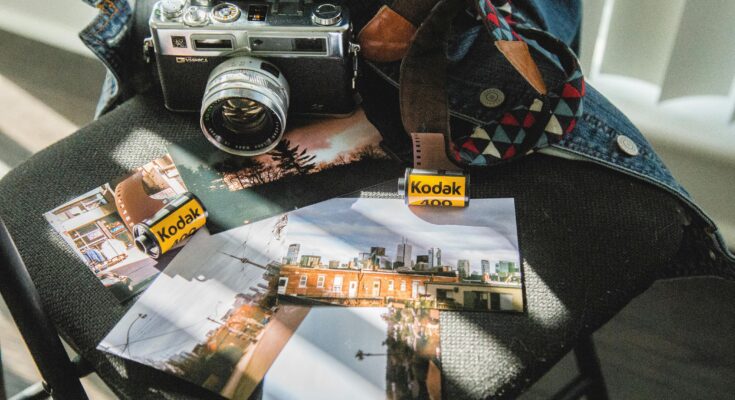Introduction
VT1000 pitting images have become a critical tool in understanding the various processes within materials, particularly in industries where corrosion and wear are major concerns. Imagine a factory floor where heavy machinery is running non-stop. Over time, the surface of the machine parts may start to degrade due to external factors such as friction, corrosion, or even poor maintenance. These degradations often manifest as pitting—a form of localized corrosion that can cause significant damage to metal surfaces. VT1000 pittingoffer a way to visually document these changes, providing an invaluable resource for engineers and material scientists alike. This article will explore the significance of VT1000 pitting, how they are captured, and their application in real-world scenarios.
What Are VT1000 Pitting Images?
Pitting refers to small, localized areas of corrosion that create small holes or pits on the surface of metals. These pits can be the result of environmental factors, such as moisture, salt, or acidic compounds, and can significantly weaken the material. VT1000 pitting are high-quality, detailed visual representations of these pits. The VT1000 is a specialized imaging system used in various industries to capture these images. It uses advanced camera and software technology to provide an in-depth view of the material surface, allowing experts to analyze the pitting in detail.
How Are VT1000 Pitting Images Captured?
The process of capturing VT1000 pitting involves advanced imaging technology. The VT1000 system uses high-resolution cameras and sensors that can detect even the smallest pits on the material’s surface. These images are then processed through specialized software to enhance the details and provide a clearer understanding of the pitting pattern. The imaging system is often used in conjunction with other testing methods, such as visual inspections or ultrasonic testing, to ensure that the full extent of the damage is captured.
Applications of VT1000 Pitting Images in Industry
In industries such as aerospace, automotive, and manufacturing, VT1000 pitting are indispensable tools for quality control and maintenance. The images allow engineers to assess the condition of materials, predict the lifespan of machinery, and plan for necessary maintenance or replacements. For example:
- Aerospace Industry: In aircraft manufacturing, where the integrity of materials is paramount, VT1000 pitting images help detect potential weak points that could lead to mechanical failure.
- Automotive Industry: Car manufacturers use these images to assess the durability of engine parts and other components that are exposed to harsh conditions.
- Manufacturing and Construction: Industries that deal with heavy machinery benefit from VT1000 pitting images to ensure the safety and efficiency of equipment.
Why Are VT1000 Pitting Images Essential?
The importance of VT1000 pitting lies in their ability to detect problems early. Corrosion and wear may not always be visible to the naked eye, but with the help of this technology, even the smallest pitting issues can be identified before they cause significant damage. This early detection can lead to reduced downtime, extended equipment lifespan, and increased safety for both workers and consumers.
Benefits of Using VT1000 Pitting Images
- Early Detection of Corrosion: The system helps detect early signs of pitting, preventing major damage.
- Accurate Documentation: These images provide a clear and detailed record, which is valuable for future reference or legal purposes.
- Cost-Efficiency: By identifying areas that need attention early on, companies can save on costly repairs and replacements.
- Enhanced Safety: Regular monitoring and early detection help maintain the integrity of equipment, reducing the risk of accidents.
- Improved Maintenance Schedules: The images assist in optimizing maintenance routines by pinpointing the exact areas that require attention.
How VT1000 Pitting Images Help Improve Material Quality
The ability to monitor pitting through VT1000 pitting enables engineers to improve the quality of materials. By identifying the root causes of corrosion and wear, materials can be redesigned or treated to better withstand these challenges. The data gathered from these images can also lead to advancements in material science, such as the development of new alloys or coatings that resist corrosion better.
Key Features of VT1000 Pitting Imaging Technology
- High Resolution: Captures fine details of the material’s surface, making it easier to detect even minor pits.
- Real-Time Monitoring: Offers real-time analysis of material degradation, allowing for proactive decision-making.
- Comprehensive Reporting: The software that accompanies the VT1000 system can generate detailed reports, making it easier for engineers to track changes over time.
The Role of VT1000 Pitting Images in Predictive Maintenance
One of the primary applications of VT1000 pitting is in predictive maintenance. Instead of waiting for equipment to fail, industries can use these images to predict when components will need maintenance or replacement. By regularly analyzing pitting patterns, engineers can schedule repairs in advance, thus preventing unplanned downtime and improving overall productivity.
Conclusion
In conclusion, VT1000 pitting images play a critical role in maintaining the integrity of materials and machinery in various industries. Their ability to provide high-quality, detailed images of pitting corrosion allows for better decision-making, timely repairs, and improved material quality. Whether in aerospace, automotive, or manufacturing, these images are an essential tool for anyone concerned with the longevity and safety of their equipment. As industries continue to embrace new technologies, VT1000 pitting will remain an invaluable asset in the fight against corrosion and wear.
Key Takeaways
- VT1000 pitting are crucial for identifying and monitoring pitting corrosion on materials.
- They are used in various industries, including aerospace, automotive, and manufacturing.
- The images help engineers detect issues early, reducing downtime and extending equipment life.
- VT1000 pitting improve predictive maintenance by providing early insights into potential problems.
FAQs
What is a VT1000 pitting image?
A VT1000 pitting image is a high-resolution visual representation of corrosion pits on materials, used to analyze the extent of damage.
How are VT1000 pitting images captured?
These images are captured using advanced cameras and sensors, which detect even the smallest pitting on the surface.
What industries use VT1000 pitting images?
VT1000 pitting images are commonly used in aerospace, automotive, manufacturing, and construction industries.
Why is early detection of pitting important?
Early detection helps prevent severe damage, reduces repair costs, and extends the life of materials and machinery.
Can VT1000 pitting images predict maintenance needs?
Yes, by analyzing pitting patterns, engineers can predict when maintenance or replacement is necessary.
How does VT1000 improve material quality?
The images provide valuable data that can lead to the development of more durable materials and protective coatings.
What are the main benefits of using VT1000 pitting images?
Benefits include early detection, cost savings, improved safety, and more efficient maintenance schedules.
Are VT1000 pitting images used in real-time monitoring?
Yes, VT1000 can monitor material degradation in real-time, enabling proactive action to prevent failures.




